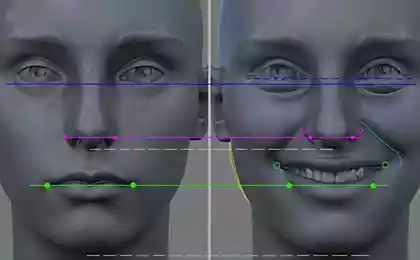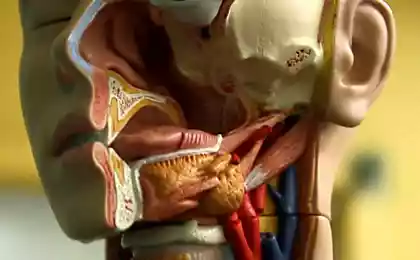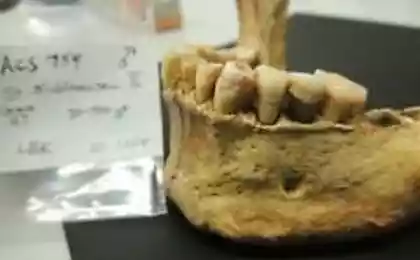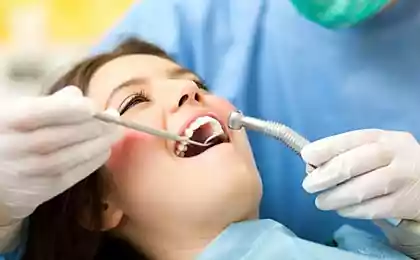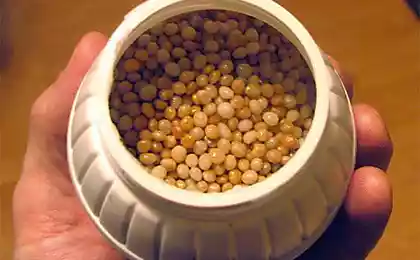1059
See what lives in your oral health!
These macro photography were made with the help of a microscope, which scans a sample of a focused beam of electrons. After that the pictures were painted digitally or manually so that you can distinguish between the individual elements. These pictures belong to the scientific darkroom in London and are used for research and educational purposes. They show us the consequences of improper oral hygiene.
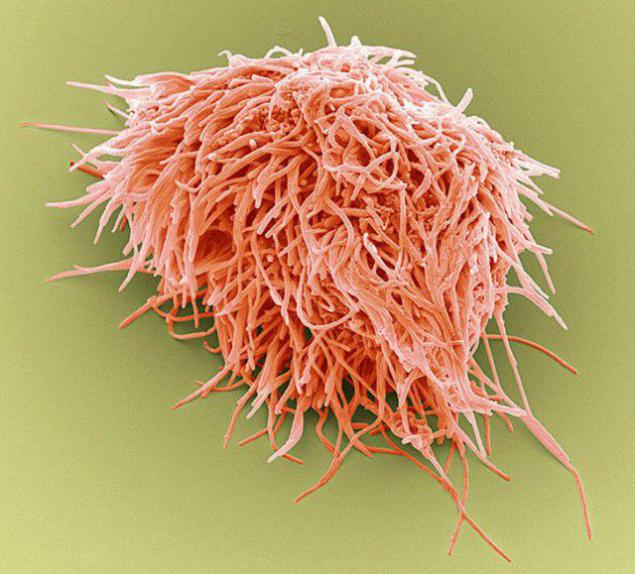
Plaque (magnification of 400 times, the width of the drawing - 10 cm) - is a biofilm formed by bacteria colonizing that attempt to join the tooth surface.
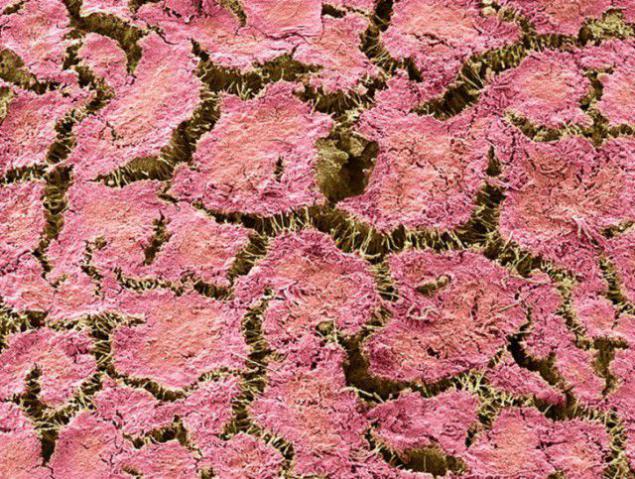
Milk tooth. Most human teeth formed from the dentine - substances shroud cavity which are soft connective tissue, blood vessels and nerves. Then the crown of the tooth enamel covers (pictured above white) - harder and mineralized material that protects the dentin of the acids in the mouth. At the root of the tooth dentin is protected by a substance called cement (pink), which serves as a means by which the periodontal ligament can be attached to the tooth stability
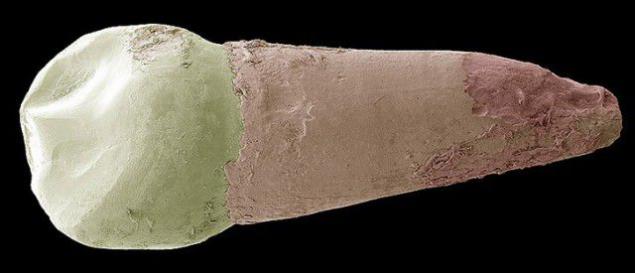
And this is the same plaque at a magnification of 10 000 times. The width remains unchanged.
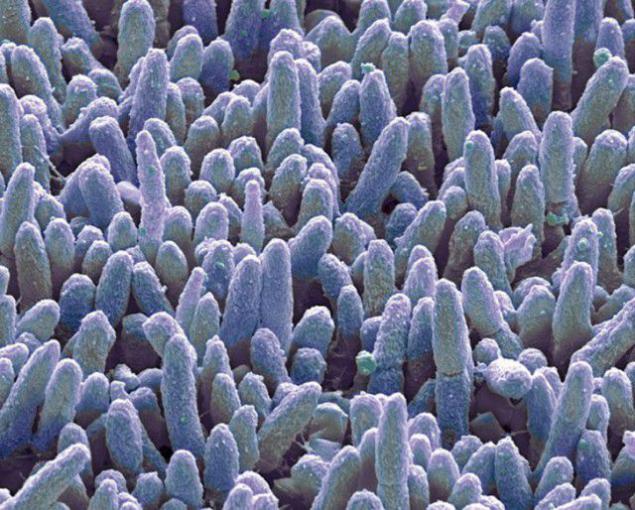
There is shown amelogenic layer cells (blue), the surface of the tooth (yellow) and dentin (red). Loss of enamel or dentin exposes cement - porous material with microscopic channels called dentinal tubules which connect the pulp, which leads to tooth sensitivity.
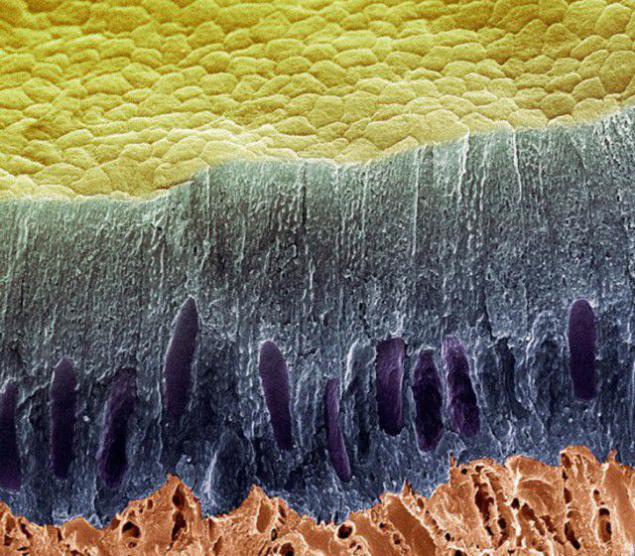
Yellow shows a plaque on the tooth surface. Acid is a waste generated during the digestive process of the bacteria. She deminiralizuet tooth, creating cavities to be filled or that can lead to tooth loss.
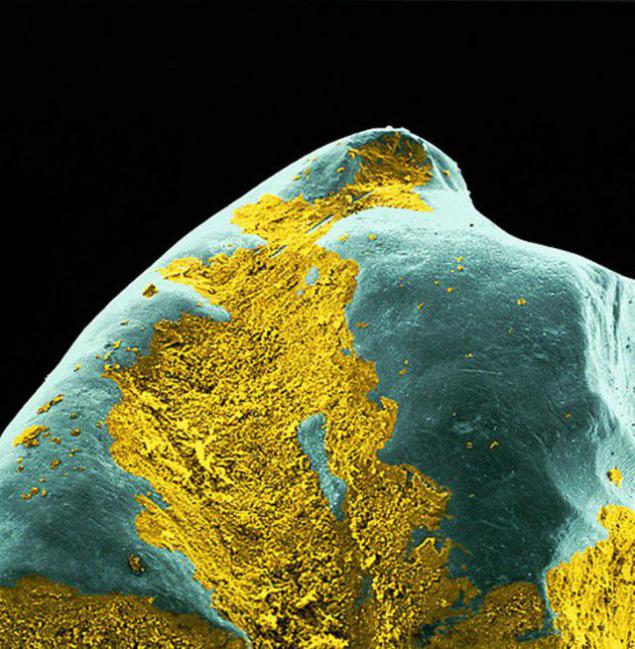
Man with a hollow cutter or loss of minerals caused by bacterial acid "garbage." In this case, the cavities formed on the side of the tooth (between two teeth) and at the gum line (between the crown - yellow - and the root), possibly due to lack of flossing or improper use. British scientists have found that every third adult is subject to decay, and a study conducted at 5-year-old children in 2012 showed that every fourth of them have some degree of dental caries.
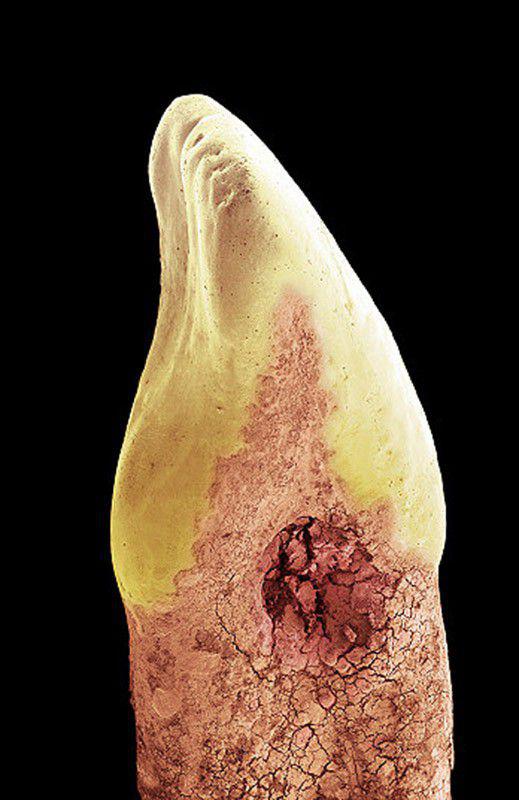
We hope this photo will convince you to brush your teeth every day thread ... Yellow - are bacteria on the gums. Plaque accumulation may cause damage to the gums, such as gingivitis or periodontitis.
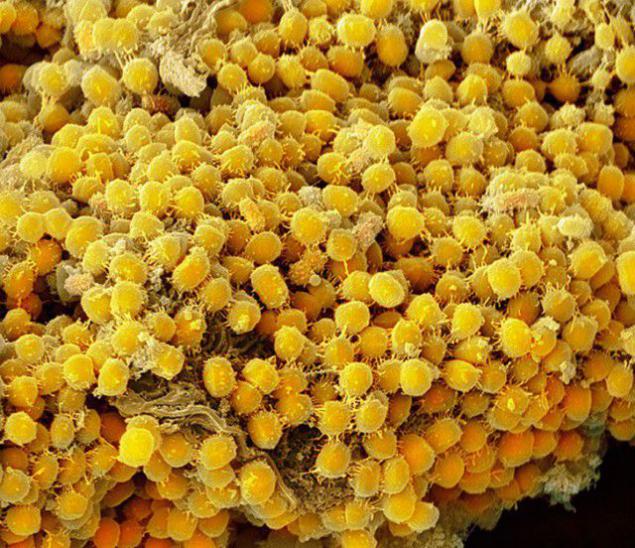
The surface of human teeth (colored yellow) carpet spherical bacteria (colored blue) and blood vessels (colored red).
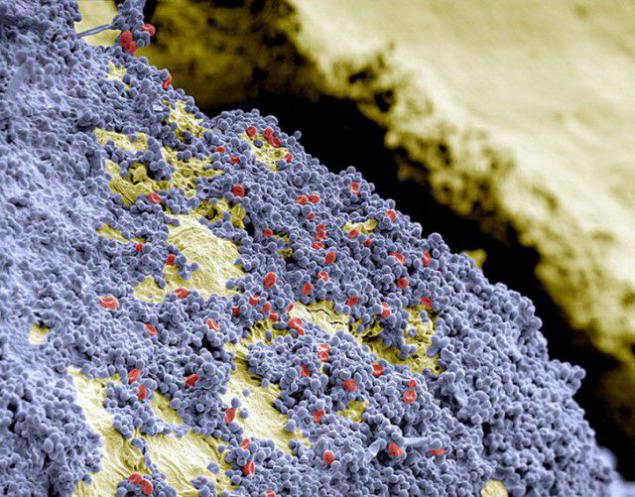
The bristles of the toothbrush. They are erased with time and wear, reducing the effectiveness of the toothbrush. Change toothbrush necessary, at least every 3-4 months. However, the wear may vary among individuals, depending on their habits brushing teeth. If necessary, the toothbrush should be changed first.
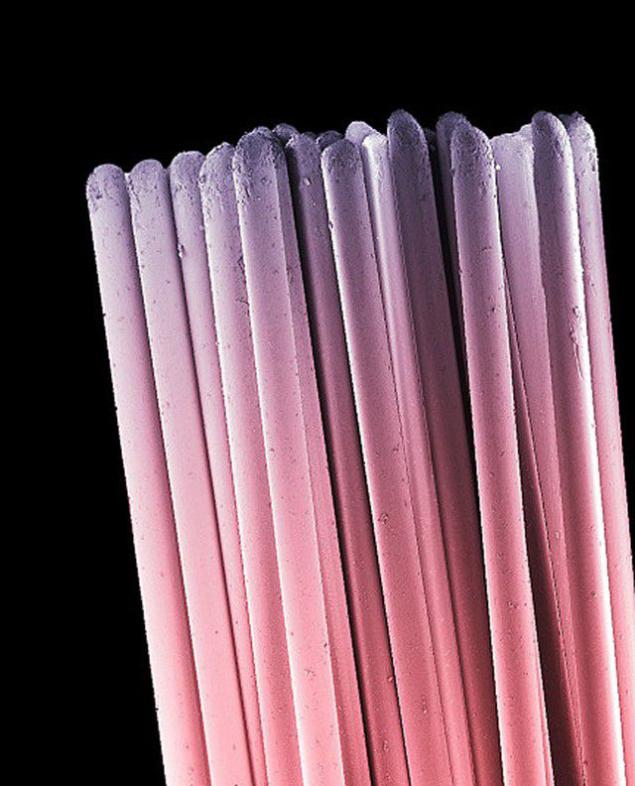
Plaque on the bristles of the toothbrush used at a magnification of 750 times.

The bristles of the toothbrush, coated plaque. After brushing toothbrush should be thoroughly washed to remove all traces of toothpaste, or particles of plaque and bacteria. It should be dried by standing in the open air. The closed containers more moisture, which promotes microbial.
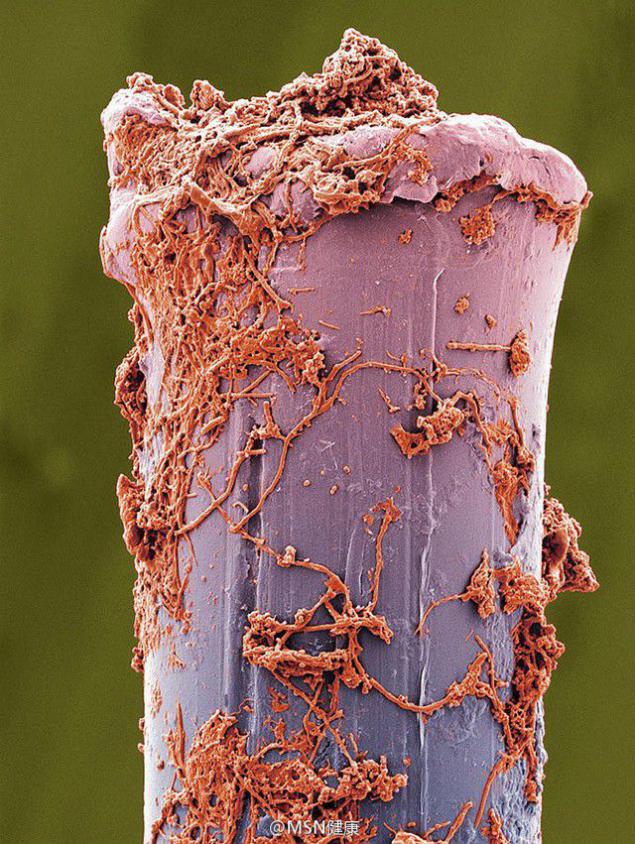
Interdental brushes (as in the photo) have small heads with bristles designed for cleaning between the teeth. Your dentist may advise you to use interdental brush, but it is not a substitute for dental floss.
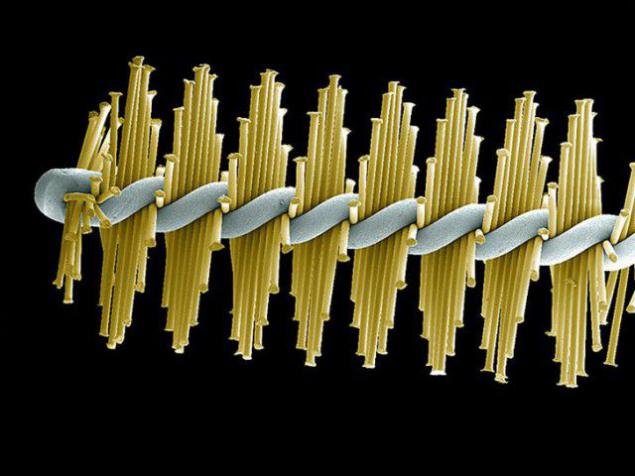
A more detailed view of the interdental bristles used their brush coated with plaque.
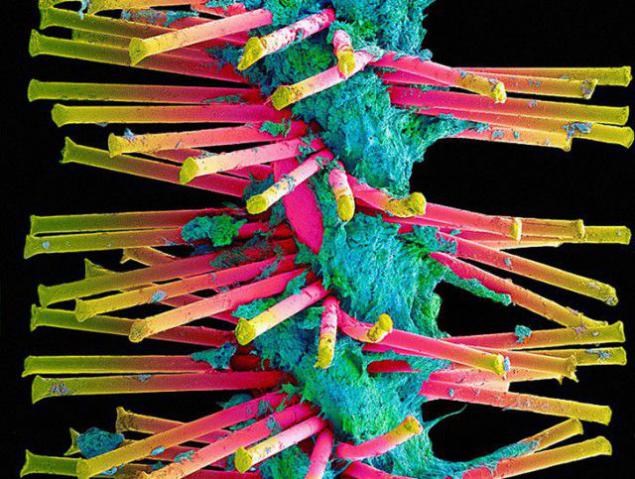
Crown baby tooth. Its root exfoliate in a process known as a temporary tooth resorption. This was due to pressure from the growing permanent teeth.
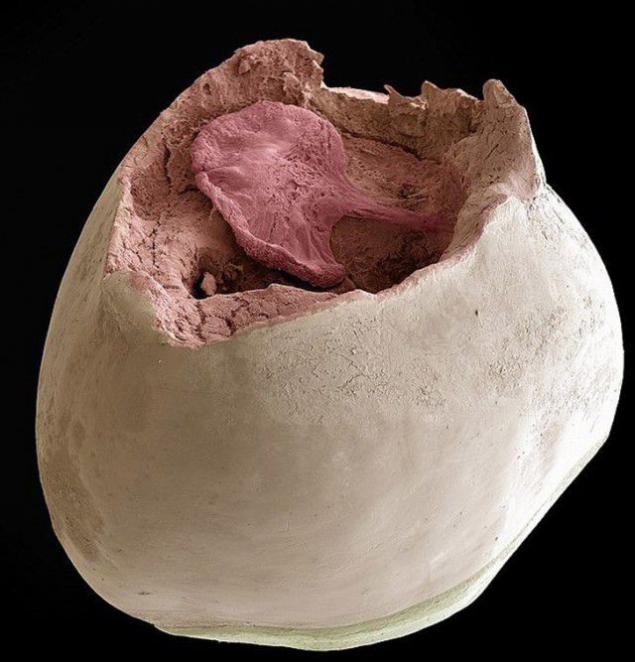
Naletoobrazuyuschie bacteria at a magnification of 1000 times.
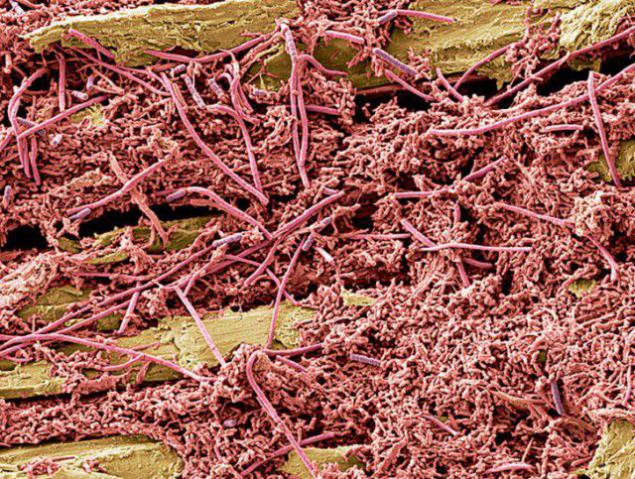
The bacteria that form plaque.
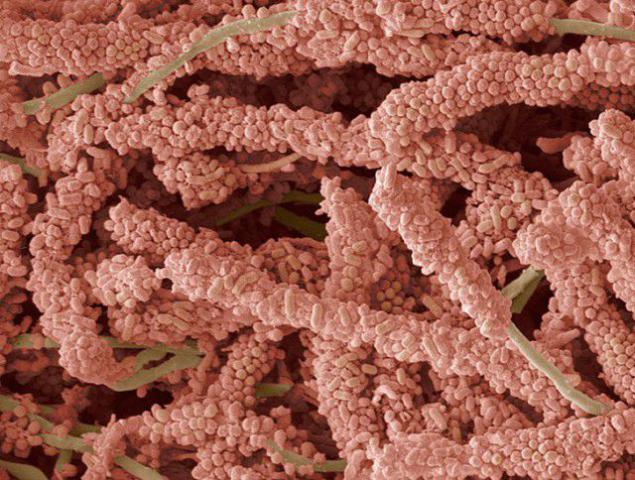
Bacteria forming plaque at a magnification of 8000 times.
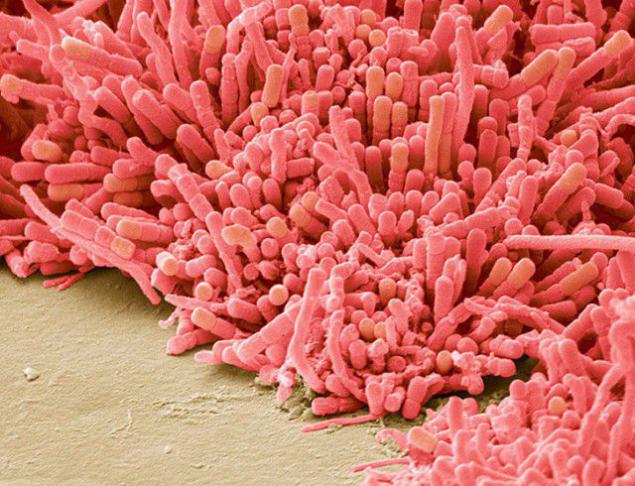
Among other applications, the drill (pictured) is also used for the removal of soft tissue and bacteria from the plaque in front of preparation for sealing, or under seal may start to form new plaque.
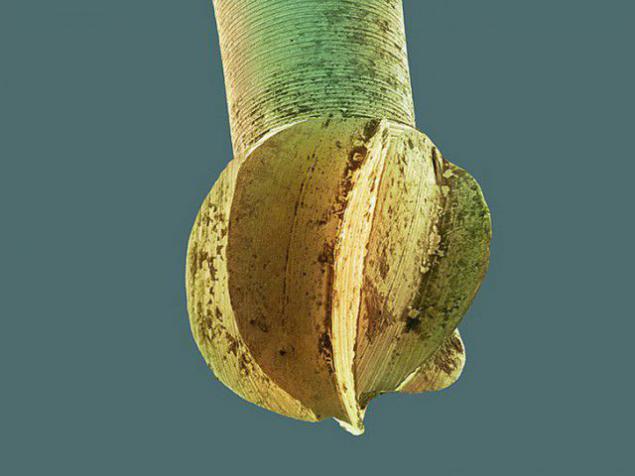
This is - the tip of the drill.
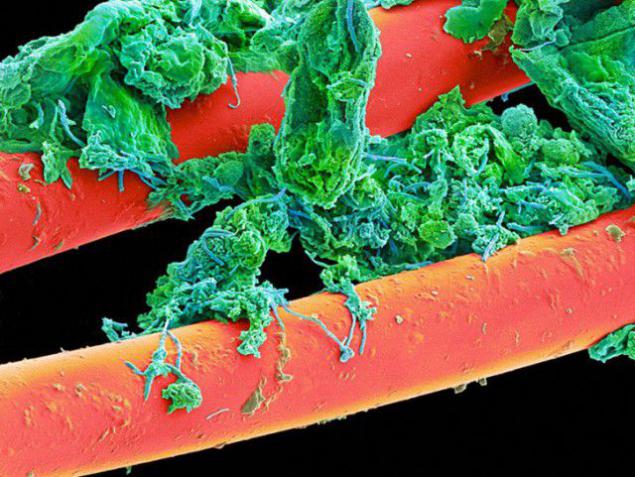
Crystals of calcium phosphate used for the remineralization of tooth after the loss of minerals due to bacteria.
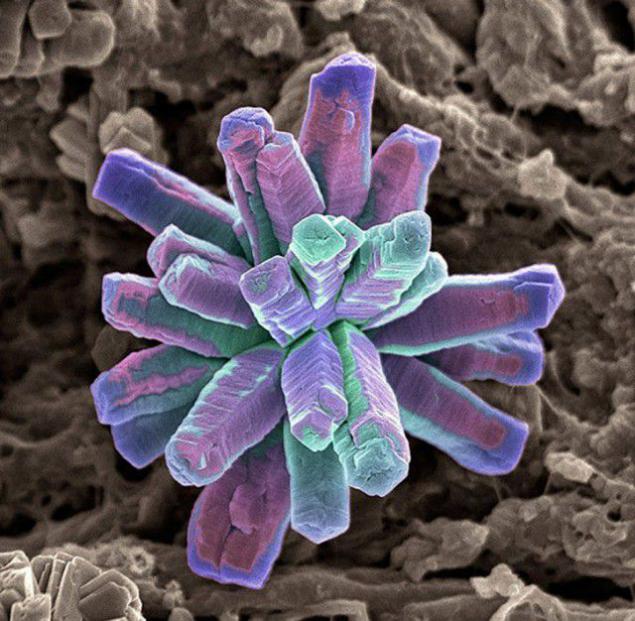
Dental pin for strengthening material for fillings and crowns, when a large part of the tooth decayed or missing.
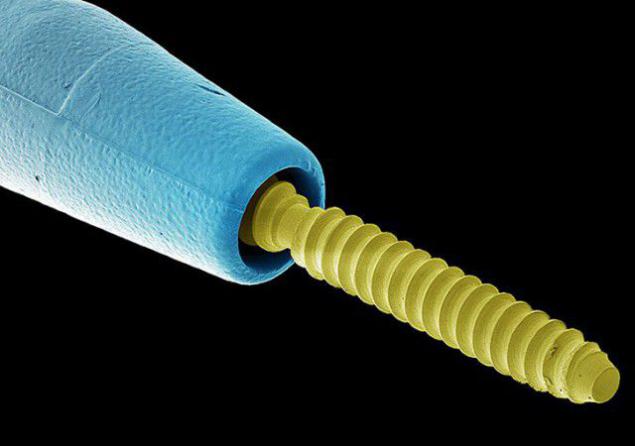
Source: www.telegraph.co.uk

Plaque (magnification of 400 times, the width of the drawing - 10 cm) - is a biofilm formed by bacteria colonizing that attempt to join the tooth surface.

Milk tooth. Most human teeth formed from the dentine - substances shroud cavity which are soft connective tissue, blood vessels and nerves. Then the crown of the tooth enamel covers (pictured above white) - harder and mineralized material that protects the dentin of the acids in the mouth. At the root of the tooth dentin is protected by a substance called cement (pink), which serves as a means by which the periodontal ligament can be attached to the tooth stability

And this is the same plaque at a magnification of 10 000 times. The width remains unchanged.

There is shown amelogenic layer cells (blue), the surface of the tooth (yellow) and dentin (red). Loss of enamel or dentin exposes cement - porous material with microscopic channels called dentinal tubules which connect the pulp, which leads to tooth sensitivity.

Yellow shows a plaque on the tooth surface. Acid is a waste generated during the digestive process of the bacteria. She deminiralizuet tooth, creating cavities to be filled or that can lead to tooth loss.

Man with a hollow cutter or loss of minerals caused by bacterial acid "garbage." In this case, the cavities formed on the side of the tooth (between two teeth) and at the gum line (between the crown - yellow - and the root), possibly due to lack of flossing or improper use. British scientists have found that every third adult is subject to decay, and a study conducted at 5-year-old children in 2012 showed that every fourth of them have some degree of dental caries.

We hope this photo will convince you to brush your teeth every day thread ... Yellow - are bacteria on the gums. Plaque accumulation may cause damage to the gums, such as gingivitis or periodontitis.

The surface of human teeth (colored yellow) carpet spherical bacteria (colored blue) and blood vessels (colored red).

The bristles of the toothbrush. They are erased with time and wear, reducing the effectiveness of the toothbrush. Change toothbrush necessary, at least every 3-4 months. However, the wear may vary among individuals, depending on their habits brushing teeth. If necessary, the toothbrush should be changed first.

Plaque on the bristles of the toothbrush used at a magnification of 750 times.

The bristles of the toothbrush, coated plaque. After brushing toothbrush should be thoroughly washed to remove all traces of toothpaste, or particles of plaque and bacteria. It should be dried by standing in the open air. The closed containers more moisture, which promotes microbial.

Interdental brushes (as in the photo) have small heads with bristles designed for cleaning between the teeth. Your dentist may advise you to use interdental brush, but it is not a substitute for dental floss.

A more detailed view of the interdental bristles used their brush coated with plaque.

Crown baby tooth. Its root exfoliate in a process known as a temporary tooth resorption. This was due to pressure from the growing permanent teeth.

Naletoobrazuyuschie bacteria at a magnification of 1000 times.

The bacteria that form plaque.

Bacteria forming plaque at a magnification of 8000 times.

Among other applications, the drill (pictured) is also used for the removal of soft tissue and bacteria from the plaque in front of preparation for sealing, or under seal may start to form new plaque.

This is - the tip of the drill.

Crystals of calcium phosphate used for the remineralization of tooth after the loss of minerals due to bacteria.

Dental pin for strengthening material for fillings and crowns, when a large part of the tooth decayed or missing.

Source: www.telegraph.co.uk




